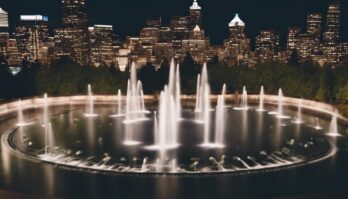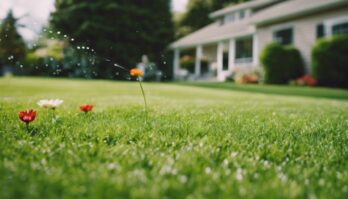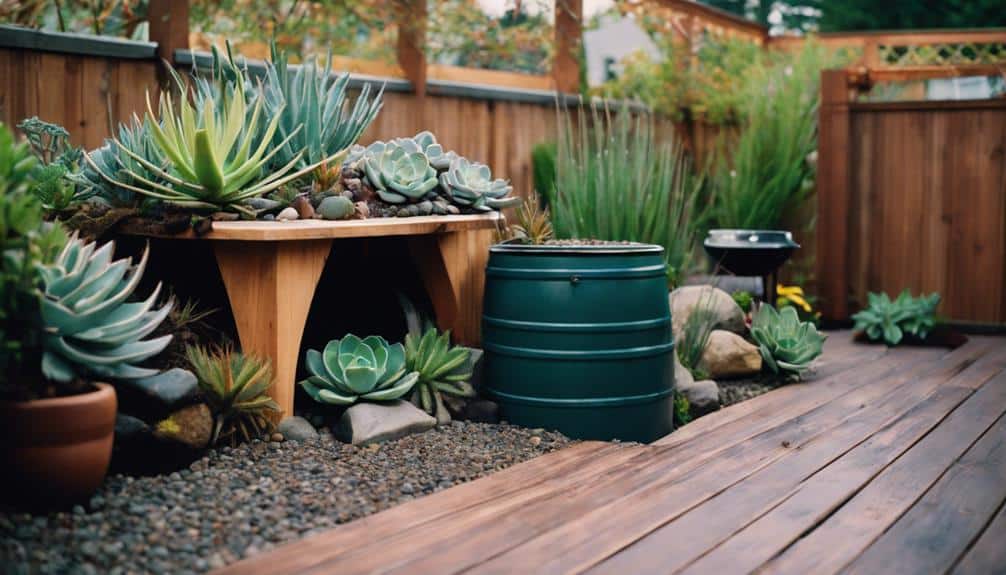
Have you ever wondered if it's possible to achieve a lush and beautiful landscape in Seattle while conserving water during dry spells? With the increasing concerns about water scarcity, exploring drought-tolerant landscaping ideas for your Seattle home could be a game-changer in maintaining an eco-friendly outdoor space. By incorporating suitable plants, efficient irrigation methods, and innovative hardscaping techniques, you can create a sustainable and visually appealing garden that thrives even in drier conditions.
Key Takeaways
- Choose native plants for Seattle's climate and water conservation.
- Implement water-efficient irrigation systems for sustainable landscaping.
- Utilize xeriscaping techniques like rainwater harvesting and succulent gardens.
- Opt for drought-resistant lawn alternatives such as rock gardens and permeable pavers.
Benefits of Drought-Tolerant Landscaping
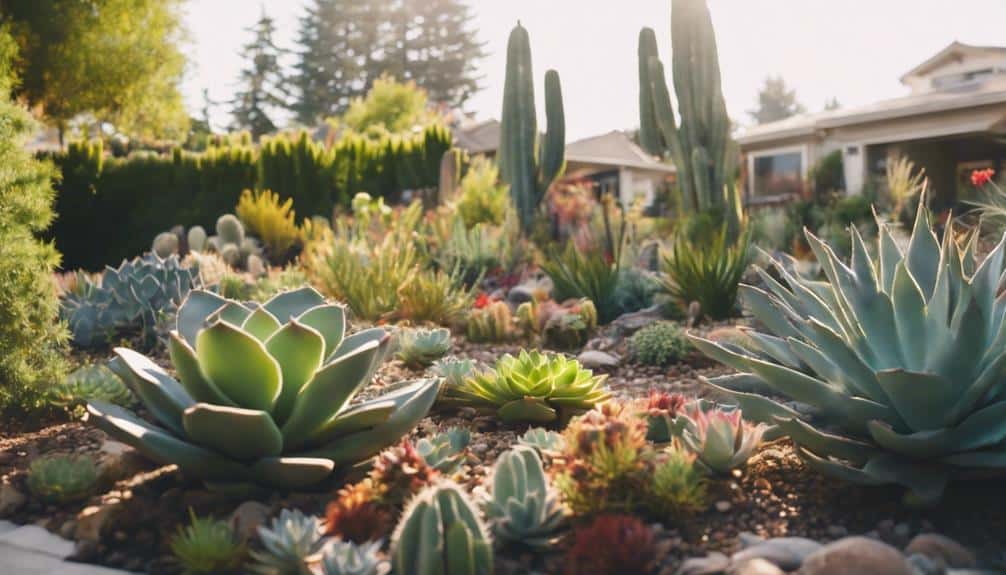
Discover the numerous advantages of incorporating drought-tolerant landscaping into your Seattle home, from reducing water usage to enhancing the beauty of your outdoor space. By opting for drought-tolerant plants, you contribute to water conservation efforts in your community. These plants require minimal watering, helping you save on resources and reduce your environmental impact. Embracing drought-tolerant landscaping also brings sustainability benefits, as these plants are well-adapted to the local climate, requiring less maintenance and pesticides. Not only do they thrive in Seattle's conditions, but they also attract pollinators and beneficial insects, creating a balanced ecosystem in your garden. Make a sustainable choice by selecting drought-tolerant landscaping options that not only look stunning but also support the environment.
Choosing Native Plants for Seattle
Enhance your Seattle landscape sustainably by carefully selecting native plants that thrive in the region's unique climate and conditions. Native plant benefits include requiring less water, being more resistant to local pests, and providing essential habitats for wildlife. When choosing native plants for your Seattle garden, consider planting strategies that mimic natural ecosystems. Group plants with similar water and sunlight needs together to create efficient watering zones. Utilize mulch to retain soil moisture and suppress weeds, reducing the need for excessive watering and maintenance. By incorporating native plants and thoughtful planting techniques, you can create a beautiful, low-maintenance landscape that not only conserves water but also contributes to the local ecosystem's health and biodiversity.
| Native Plant Benefits | Planting Strategies | Maintenance Tips |
|---|---|---|
| Requires less water | Group by needs | Use mulch |
| Resistant to pests | Mimic ecosystems | Monitor for pests |
| Provides wildlife habitats | Efficient watering zones | Regular pruning |
Water-Efficient Irrigation Systems
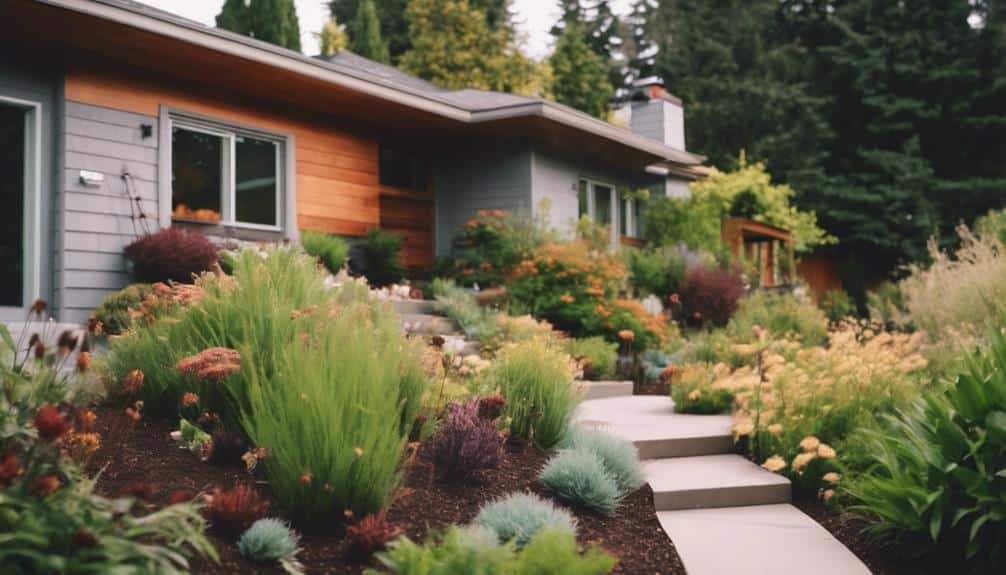
Implementing water-efficient irrigation systems can significantly reduce water waste while ensuring your Seattle landscape remains lush and vibrant. To achieve this, consider the following:
- Smart Irrigation: Install a smart irrigation system that adjusts watering schedules based on real-time weather data to prevent overwatering.
- Rainwater Harvesting: Set up rain barrels or cisterns to collect rainwater, which can then be used for watering your plants, reducing the reliance on municipal water.
- Drip Irrigation: Opt for drip irrigation systems that deliver water directly to the base of plants, minimizing evaporation and runoff.
- Soil Moisture Sensors: Use soil moisture sensors to monitor the moisture levels in your soil and only water when necessary, preventing water wastage.
Xeriscaping Techniques for Seattle
To create a water-efficient and visually appealing landscape in Seattle, consider implementing xeriscaping techniques that embrace the region's unique climate and natural beauty. Start by incorporating rainwater harvesting into your design. Utilize rain barrels or cisterns to collect rainwater, reducing the need for additional irrigation. This sustainable practice not only conserves water but also nurtures your plants with natural, untreated water. Additionally, consider planting succulent gardens in your xeriscape. Succulents are well-suited to Seattle's climate, requiring minimal watering and offering a diverse range of colors and textures. These hardy plants thrive in the region's mild temperatures and can add a striking aesthetic to your landscape while promoting water conservation. Embrace xeriscaping with rainwater harvesting and succulent gardens for a beautiful, eco-friendly outdoor space.
Drought-Resistant Lawn Alternatives
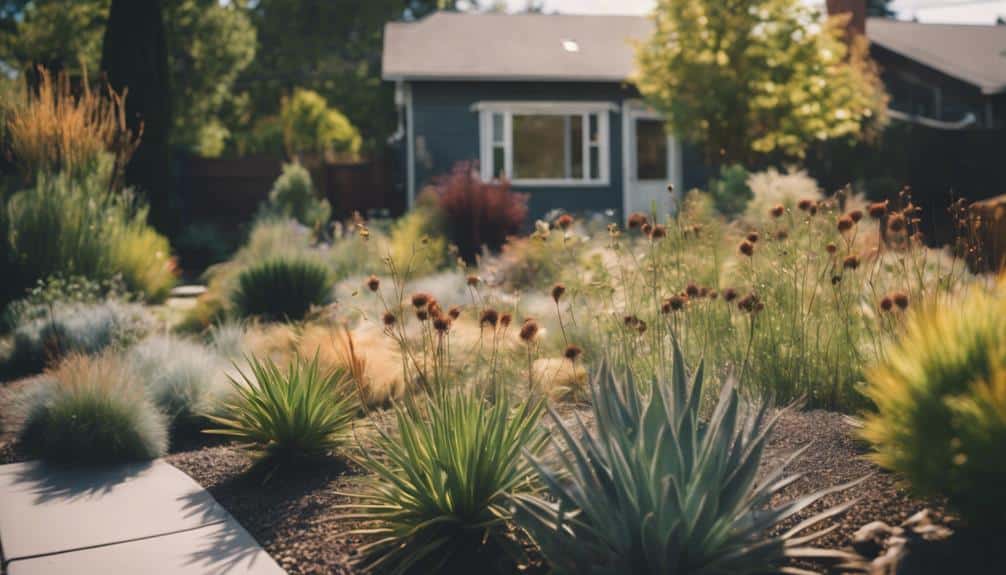
Consider exploring innovative and water-efficient alternatives to traditional lawns that thrive in Seattle's unique climate and promote sustainability in your landscaping. Here are four drought-resistant lawn alternatives to consider:
- Succulent Gardens: Create a stunning landscape using a variety of drought-tolerant succulents. These low-maintenance plants come in various shapes, sizes, and colors, adding visual interest to your yard while conserving water.
- Rock Gardens: Design a beautiful rock garden with a mix of rocks, boulders, and drought-resistant plants. This option not only reduces water usage but also adds a natural and rugged charm to your outdoor space.
- Permeable Pavers: Install permeable pavers in place of traditional grass to allow rainwater to seep into the ground, reducing runoff and aiding in groundwater replenishment.
- Artificial Turf: Consider artificial turf as a water-saving alternative that provides the look of a lush lawn without the need for excessive watering or maintenance.
Soil Preparation and Mulching Tips
Explore the foundation of your Seattle landscaping by preparing the soil and incorporating effective mulching techniques to enhance the health and resilience of your drought-tolerant garden. Start by conducting soil testing to understand its composition better. Based on the results, consider adding organic amendments like compost to enrich the soil and improve its water retention capacity. This step will help provide essential nutrients for your plants and support their growth in low-water conditions. Establish a proper watering schedule, taking into account the specific needs of your newly planted drought-resistant vegetation. Additionally, apply a layer of mulch around your plants to conserve moisture, suppress weed growth, and regulate soil temperature. These practices will promote a healthy and sustainable landscape that thrives even during dry spells.
Creative Hardscaping Ideas
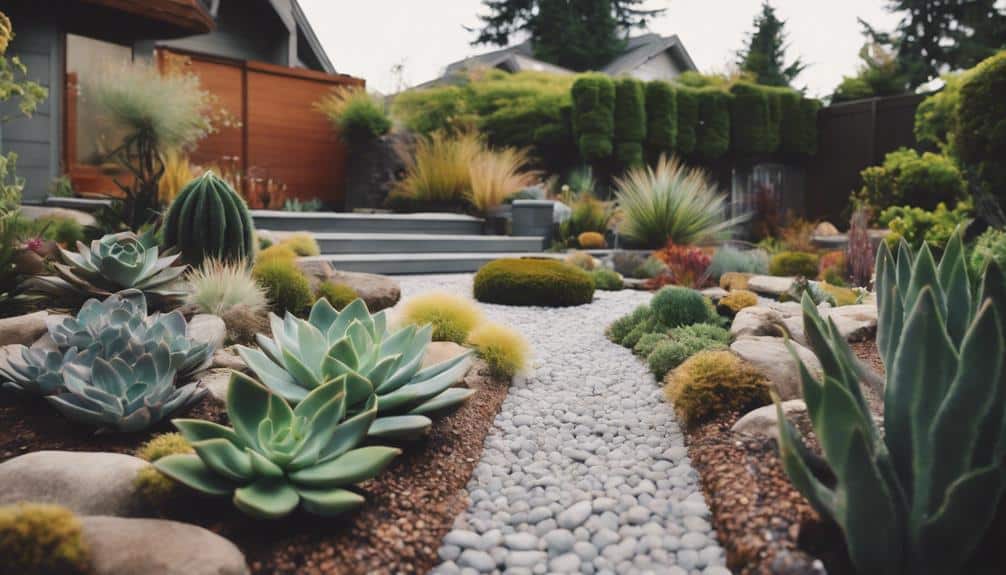
Enhance the structural beauty and functionality of your Seattle landscape with innovative hardscaping features that complement your drought-tolerant plants. Consider these creative additions to elevate your outdoor space:
- Creative Paving Options: Explore using unique patterns and materials like permeable pavers that allow water to seep through, reducing runoff.
- Innovative Rock Placements: Integrate rocks of varying sizes strategically to create focal points and natural accents while aiding in water retention.
- Unique Fountain Designs: Incorporate water features that not only add a soothing element to your landscape but also support local wildlife by providing a water source.
- Modern Fire Pit Installations: Install a stylish fire pit that serves as a gathering point in cooler evenings, adding a cozy ambiance to your drought-tolerant garden.
Maintenance Tips for Drought-Resistant Landscapes
Maintaining a drought-resistant landscape in Seattle requires mindful watering practices and strategic plant choices. By adjusting your watering frequency to suit the needs of your plants, you can conserve water while keeping your landscape thriving. Carefully selecting native and drought-tolerant species will not only help sustain your garden but also reduce the maintenance needed for a lush and sustainable outdoor space.
Watering Frequency
To ensure your drought-resistant landscape thrives, adjust your watering frequency according to the specific needs of each plant variety. Here are some tips to help you maintain the ideal soil moisture levels and conserve water in your garden:
- Mulching: Spread a layer of organic mulch around plants to retain soil moisture.
- Drip Irrigation: Use drip irrigation systems to deliver water directly to the roots where it's needed most.
- Rain Barrels: Collect rainwater in barrels to use for watering your plants during dry periods.
- Watering Schedule: Establish a watering schedule based on plant requirements and weather conditions to prevent overwatering.
Plant Selection
Selecting the right plants for your drought-resistant landscape is crucial for ensuring minimal maintenance and maximum sustainability. When choosing plants, consider the soil composition of your garden. Opt for species that thrive in well-draining soil to prevent waterlogging. Plant spacing is also essential; ensure adequate room between plants to reduce competition for water and nutrients. Additionally, take into account the sun exposure in different areas of your yard. Place sun-loving plants in sunny spots and shade-tolerant ones in shaded areas to optimize growth. Develop a watering schedule based on the specific needs of each plant, considering factors such as the plant's maturity, weather conditions, and soil moisture levels. By carefully selecting and placing your plants, you can create a thriving and low-maintenance drought-resistant landscape.
Frequently Asked Questions
Can Drought-Tolerant Landscaping Increase the Value of My Seattle Home?
Incorporating drought-tolerant landscaping can boost your Seattle home's value significantly. Sustainable design choices not only conserve water but also enhance the property's appeal. Transform your outdoor space into a haven while adding value.
Are There Any Incentives or Rebates Available for Installing Drought-Tolerant Landscaping in Seattle?
You can benefit from rebate programs in Seattle for installing drought-tolerant landscaping. These initiatives promote water conservation and sustainable practices while reducing the environmental impact. Take advantage of incentives to make a positive change to your home.
How Can I Incorporate Edible Plants Into a Drought-Tolerant Landscape in Seattle?
You can create a sustainable, water-wise garden that doubles as a food source by blending edible landscapes with drought-tolerant plants. Imagine a lush oasis where every plant offers beauty and sustenance.
What Are Some Common Mistakes to Avoid When Planning a Drought-Tolerant Landscape in Seattle?
When planning your drought-tolerant landscape in Seattle, avoid common pitfalls like overwatering, improper plant selection, and neglecting soil health. Follow planning tips such as designing for water conservation, grouping plants with similar needs, and mulching effectively.
Are There Any Restrictions or Regulations I Should Be Aware of When Implementing Drought-Tolerant Landscaping in Seattle Neighborhoods?
When implementing drought-tolerant landscaping in Seattle neighborhoods, you should be aware of permit requirements and community guidelines. Consider water conservation and plant selection to ensure your landscape complies with regulations while preserving resources sustainably.

